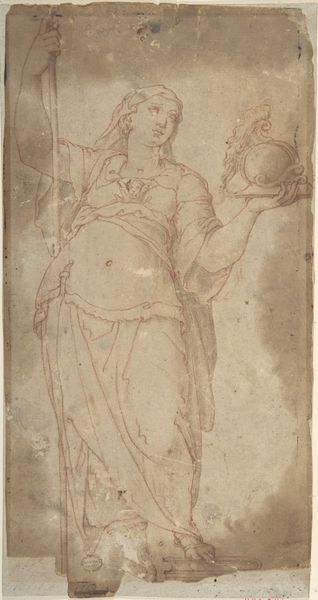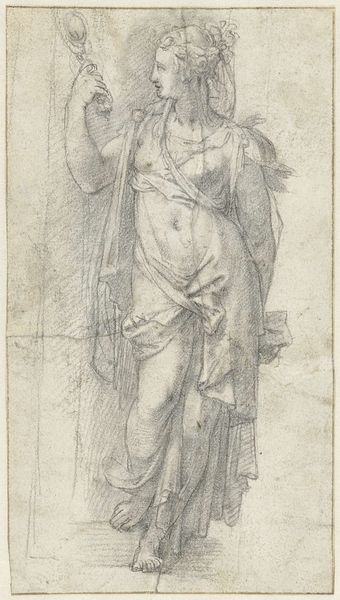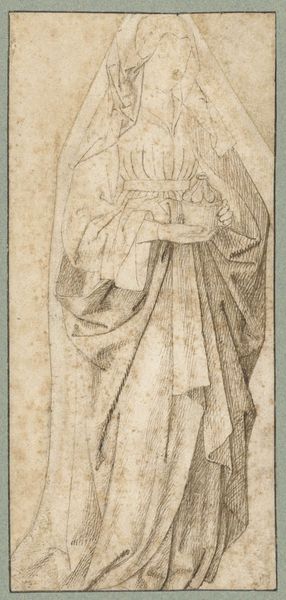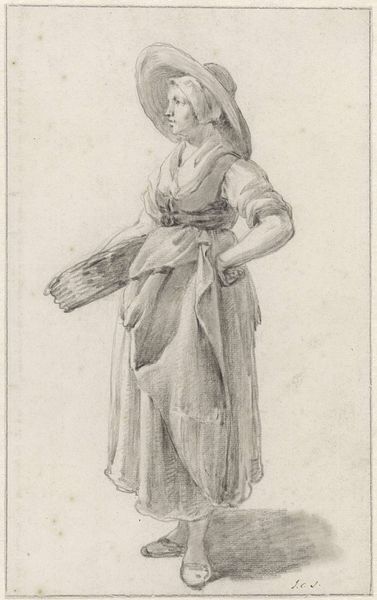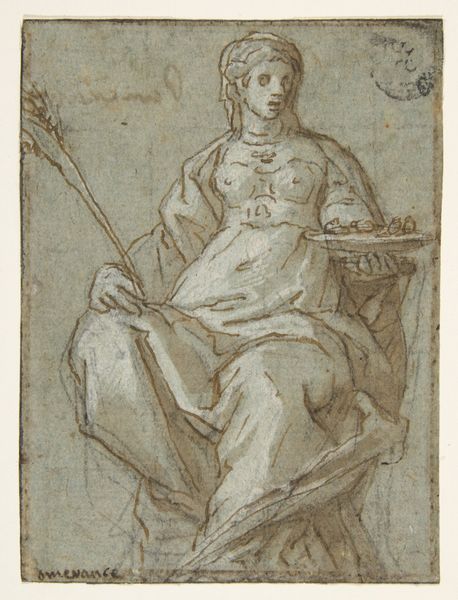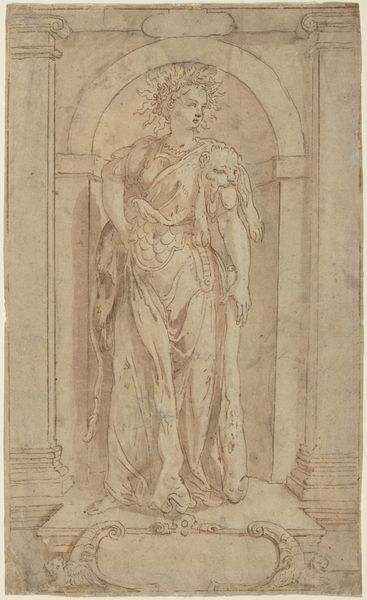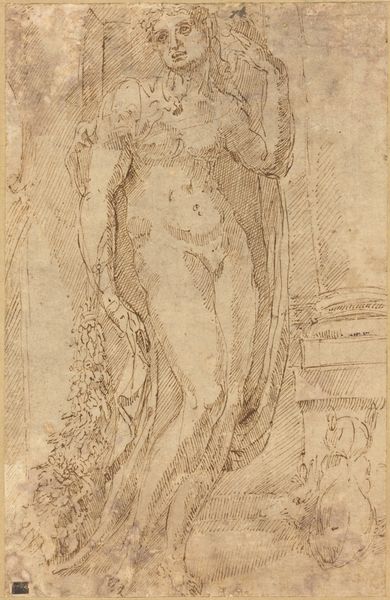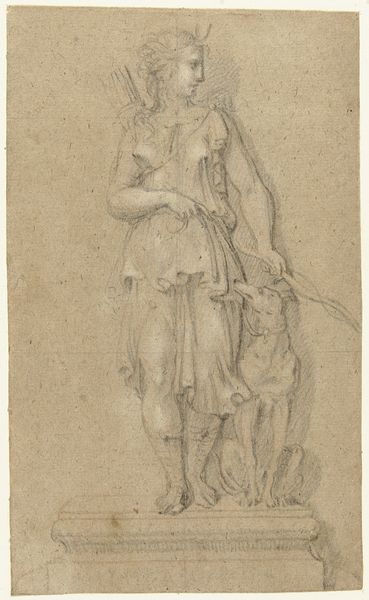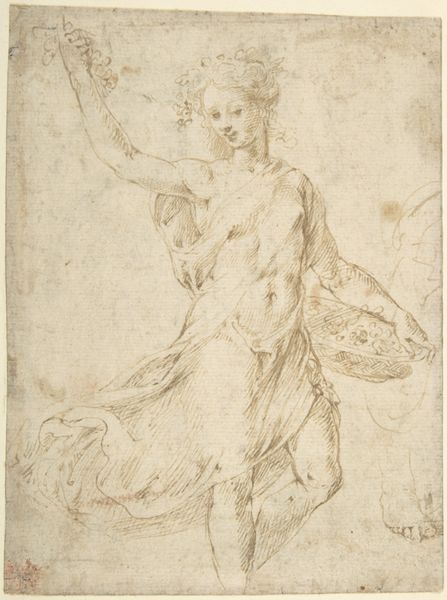
drawing, paper, pencil
#
portrait
#
drawing
#
figuration
#
paper
#
pencil
#
italian-renaissance
#
early-renaissance
Dimensions: height 132 mm, width 79 mm
Copyright: Rijks Museum: Open Domain
Curator: Standing before us is "Standing Saint Agnes," a drawing rendered in pencil on paper by Giovanni Badile, sometime between 1450 and 1474, placing it squarely in the Italian Early Renaissance. Editor: What strikes me immediately is the fragility, almost ethereal quality. It’s barely there, a whisper of a saint on aged paper. There is something intensely vulnerable and exposed in that hesitant, incomplete execution, it's very moving. Curator: Indeed. This depiction of Saint Agnes embodies several layers of significance. Her traditional symbol is the lamb, which she delicately cradles in her arms. In Christian iconography, the lamb represents innocence, purity, and sacrifice. Agnes herself was martyred as a young virgin, becoming a powerful symbol of these virtues. Editor: The lamb is such a poignant contrast to her demure yet somewhat guarded stance, isn’t it? As if she knows more than she lets on, a secret hidden within those simple lines. I think the use of pencil adds so much emotion here; the texture reminds you it’s a temporary medium – the image may fade over time like our memories of the past. Curator: Precisely, the delicate rendering lends itself to these ideas. In this Early Renaissance context, there was also a rediscovery of classical forms; we see echoes of Roman drapery in the flowing lines of her gown. This recalls continuity with a noble, ancient past even as new artistic styles were emerging. Editor: I'd love to know the personal narrative behind this; a sketch meant to evolve further. Did he decide he captured something in its barest form and leave it? I think this incompletion opens a doorway for the viewer. This drawing possesses that magic only preliminary gestures contain! Curator: It's that evocative power that makes this a work so valuable; capturing more through subtle suggestion than explicit declaration. Editor: Agreed! Its openness inspires my imagination in profound ways. Curator: Well said. A worthy contemplation then for anyone hoping to understand the evolution and enduring nature of symbols and visual storytelling.
Comments
No comments
Be the first to comment and join the conversation on the ultimate creative platform.


